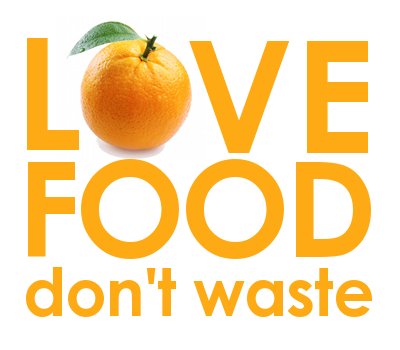According to the UN Food and Agriculture Organization, as much as 222 million tons of food are thrown away every year in wealthy countries. To be even more specific, North Americans throw away, on average, 15-40% of the food they buy.
That number boggles my mind – it is SO easy for us to throw out a half-eaten plate of dinner or the uneaten half of an apple without even thinking about it, while other countries struggle to feed even a quarter of the population. This is what has led me to thinking about some ways to waste less food in our home.
1. Plan meals. Planning what your family is going to eat over the next week will not only make your shopping trips much easier & save on your family budget, but it also cuts down on food that goes unused because you don’t have a recipe for it.
2. Portion planning. Cook appropriate food portions for the people you are serving. So much food goes to waste simply because we cook portion sizes that are far too big; and we serve up our plates with way more food than we can eat, and then scrape the leftovers into the garbage. Cooking and serving the correct portion sizes not only helps waste less food, but it also saves you money and helps you eat a healthy amount.
3. Become aware of the state of your fridge. If your fridge is crammed full and you’re afraid of what might be lurking inside, set aside a day to clean it out completely and reorganize your food; then make a resolution to keep it clean. Purchase clear containers for storing leftovers to make it easy to see what’s inside – stop using old yogurt and margarine containers… they create a cluttered, confused fridge. Organize the fruits and veggies in your crispers, and get rid of the tangle of plastic produce bags so you can see what you have to use. And if you’re really a hard core organizer, you can create a Fridge Triage Box. It’s really just a plastic lined shoe box with the label “eat me first” on the front, but it can make a huge difference in your family’s food awareness. It helps by keeping the bits of cheese, aging produce and almost empty yogurt container near the front of the fridge so they’re easy to grab for a quick snack, instead of going bad, hidden in some fridge compartment.
4. Make the most of older food and left overs. Ripe, spotty bananas are perfect for banana bread or muffins, and they’re yummy in smoothies. Old vegetables are perfect additions to stews and soups. Tomatoes can be added to pasta sauces, or added to salsa. Dry, old bread can be chopped and made into croutons, crumbled into bread crumbs, made into stuffing, or used to make french toast. And did you know that fried rice is best made with day or 2 old rice rather than freshly made rice? Learn how to make “hash” from leftover mashed potatoes & rice, and the other bits of leftovers from your fridge – the possibilities are endless!
5. Pack leftovers for lunches. If you have access to a microwave or toaster oven in your workplace or school, take advantage of having leftover supper, by packing it for your tomorrow’s lunch!
6. Use the freezer. Do you make a lot of smoothies? If so, spend a few minutes each week chopping up fruit and veggies and store them in the freezer instead of the fridge. This will keep produce fresher for MUCH longer if you end up not using it as quickly as you thought. An easy way to let it thaw is to take out the fruit you’ll be using the night before, put it in a smoothie cup in the refrigerator overnight, and pop it on the blender whenever you’re ready. If you find bread on sale, buy lots, and freeze the loaves you won’t be using right away, taking them out as you need them.
7. Donate more food. If you have cans of food in the cupboard you know you’re never going to use, donate them to the local food bank. You don’t need a special occasion to hand it over, just drop it off while running errands. This is another great way to put unspoiled perishable food to good use – if you’re going on vacation and know the food in your refrigerator will be bad by the time you return, food banks will easily put it to good use.
8. Halve your portions at restaurants. Most restaurants offer portions that are nearly double what we would make to eat at home. Ask for a carry-out box when your order comes out and put half of it in there to take home for lunch the next day. If the food isn’t sitting on your plate in front of you, you’re less likely to eat it and will save more for a second meal.
9. Buy oddly shaped produce. It sounds silly, but you’d be surprised how many people refuse to buy fruits and vegetables that look less-than-perfect in shape, size, or color. That’s all part of nature – everything has its own look – so if you grab these pieces next time you’re at the store, you’re cutting down on the food that is more likely to be neglected by other customers.
10. Be careful when buying from bulk shopping stores like Costco and Sams. A package of 6 heads of romaine lettuce for $4 isn’t a great deal if you end up throwing 3 of them away because they’ve gone bad before you had the chance to eat them. Purchase only what your family can eat, or consider teaming up with friends and dividing the large bags of produce or other dry & canned grocery goods.






I LOVE the fridge triage box idea from Tip 3. How clever! I agree that planning meals would really help a lot to cut down on waste… now if someone could teach me how to do that! lol. I wanted to throw in another idea, which is something my sister does (and probably lots of other people, too): put a “cooked-on” date on a piece of masking tape and stick it to your leftovers. It gives you an idea of how close something is to expiring so you can use it before it gets to that questionable phase when you can’t remember if it is or isn’t good anymore and you don’t want to take a chance.